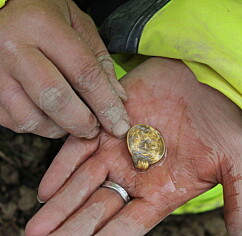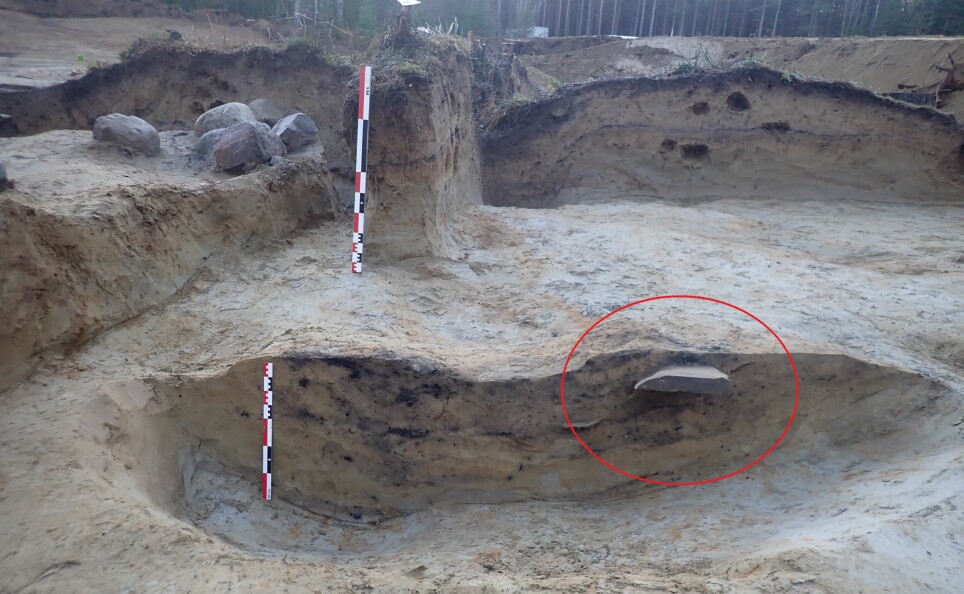
The world's oldest rune stone was found sticking out of the ground. Here’s how researchers figured out how old it is
The stone could be up to 2,000 years old — and we know that because of a cremation.
The Museum of Cultural History in Oslo recently announced that they had found the world's oldest rune stone during an excavation in 2021.
The roughly 1,800-2,000-year-old stone is called the Svingerud stone, and was found during an excavation of several grave fields near Tyrifjord, west of Oslo. The stone's name comes from this location.
The archaeologists were not aware of what they had found until the stone was examined later. The Svingerud stone is about the size of a large book, and someone has neatly carved runes into the stone.
“It is surprising that there are so many inscriptions on such an old stone, and there are also traces of shallow inscriptions in the Svingerud stone,” said Kristel Zilmer to sciencenorway.no. Zilmer is Professor of Written Culture and Iconography at the Museum of Cultural History (KHM).
Best known from the Viking Age
“Rune stones from the Viking Age are probably the most well-known, and in that case, you tend to think of monumental stones with deeper, carved runes,” she said.
But someone has carved shallow, small stripes in the Svingerud stone. Some of the signs look like they could be scribbles, while others form more clear words.
Work on interpreting the inscriptions is still ongoing, but the clearest inscription can be read as "idiberug". This could be interpreted as a name such as Idibergu or Idibera, Zilmer said. There are several other alternative ways of reading the script, according to the KHM website.
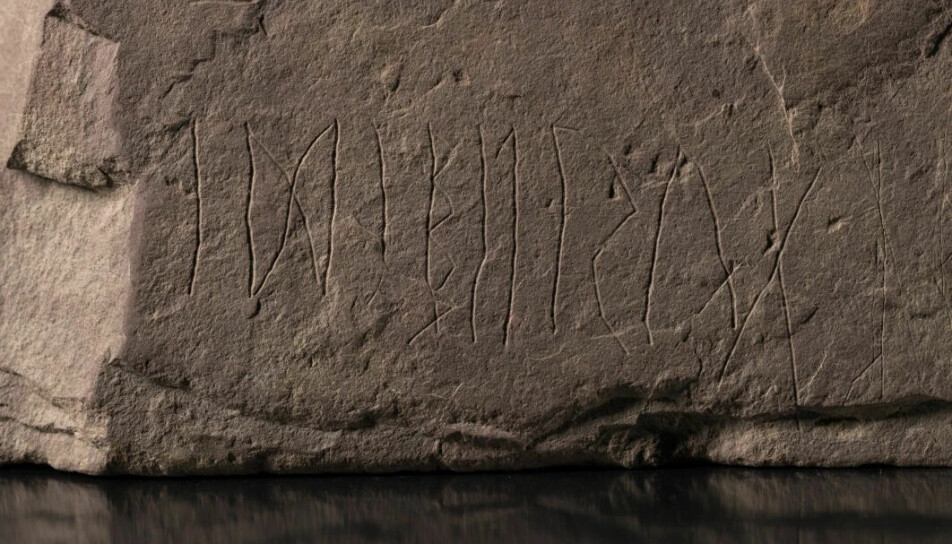
The rune stone itself is now on display at the Museum of Cultural History in Oslo and can be seen until 26 February.
To date, this is the oldest rune stone known to researchers. But how did they establish this?
Cremation and dating
The picture below shows how the rune stone was found. It stuck out from the archaeological layers that were uncovered during the excavation.
These layers contain the answer as to how the archaeologists were able to come up with a precise dating for the layers as well as the rune stone.
Because there has been no direct test of the stone itself. The researchers need something that has been alive to use the most common and precise dating technique in use, called radiocarbon dating, or C14 dating.
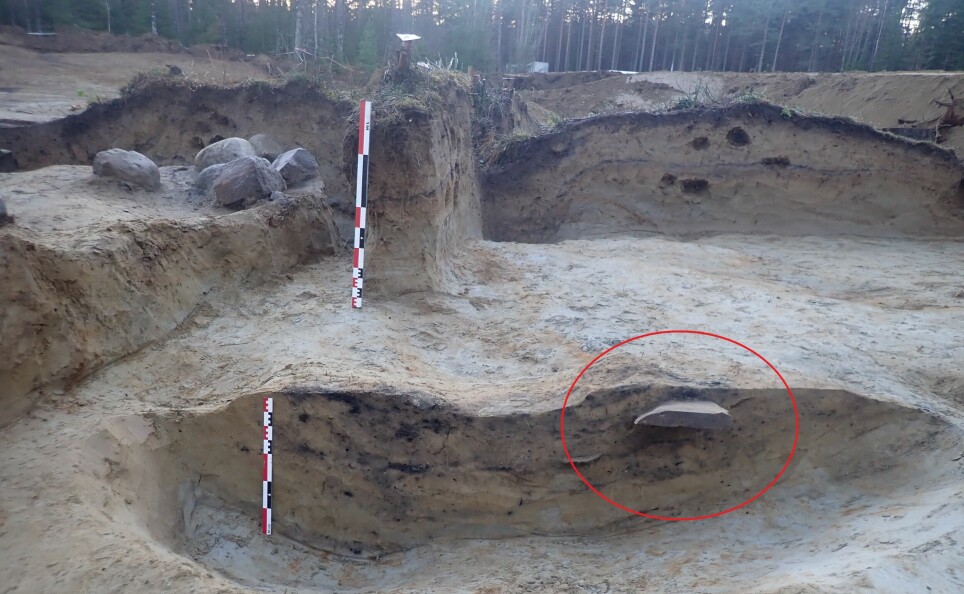
“When this photo was taken, we had no idea there was a rune stone there,” Steinar Solheim said to sciencenorway.no. He is an archaeologist at KHM and project manager for excavations related to the planned construction of a new highway and railway, the Ringerike portfolio, between Sandvika and Hønefoss.
The remains of an older grave appeared under one of the burial mounds, dating from the time before the custom of burial mounds had gradually become common again. Solheim said this is what archaeologists call a flat ground grave.
This kind of grave was quite common and typical for grave finds from the period. A deceased person was cremated on a pyre, and the remains of both the corpse and the pyre were placed in a pit or a container, Solheim said.
“It could be that the body was burned in the same place,” he said.
The stone that was found with the remains of the cremation turned out to be something very special. This was the Svingerud stone.
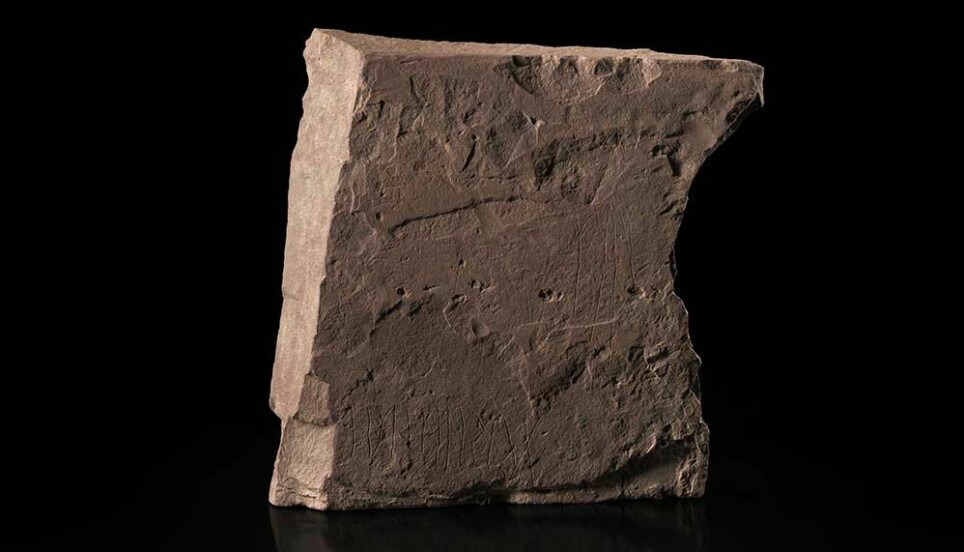
Both the charcoal and the burnt human bones have been used to date the find.
The archaeologists have concluded that the connection between the rune stone and the cremation remains is so certain that the dating applies to both.
Solheim said that they believe the stone was probably laid together with the deceased person. It may be that the person in the grave is the same person mentioned on the stone, but this is currently speculation.
But how do archaeologists actually date the stone?
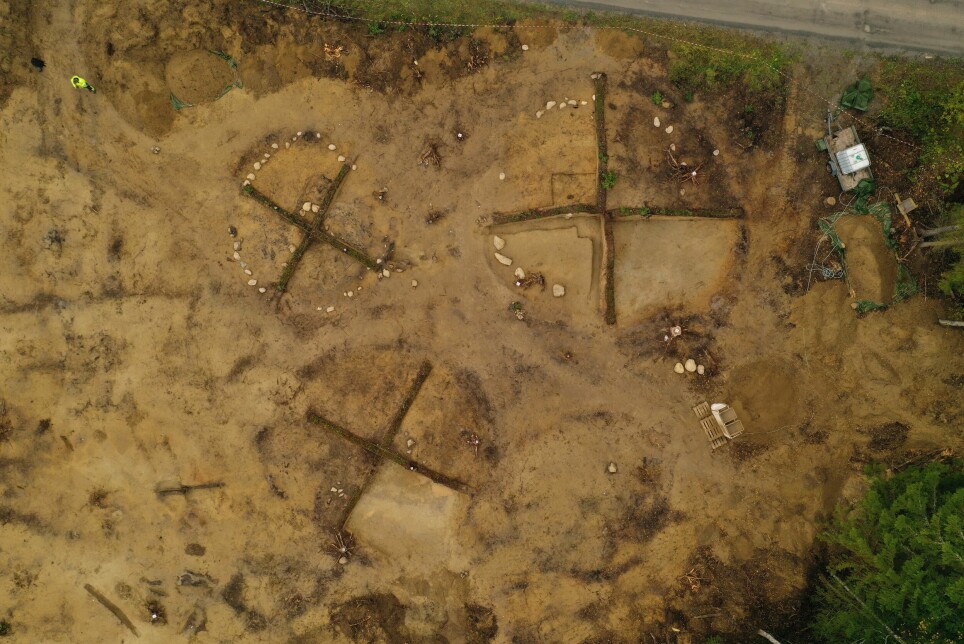
Radioactive carbon
The idea behind radiocarbon dating is that every living thing on Earth absorbs carbon while it is alive. This applies to you, me, trees, fish, mushrooms and everything else.
This carbon becomes part of the living organism, whether it’s a tree trunk or human bones.
Some radioactive carbon is always produced in the atmosphere, partly due to reactions between nitrogen and cosmic radiation at the top of the atmosphere.
So a tiny bit of the carbon that all living things take up is radioactive carbon. This is incorporated into cells, bodies, skin and hair. As long as a living thing remains alive, carbon is exchanged with the environment. Something comes in, while something goes out because the organism is constantly renewing itself.
But when, for example, a tree or a person dies, this exchange ends. Since a small proportion of the carbon is radioactive, some of the carbon disappears every year.
This is called the half-life and is one of the properties of radioactive substances.
And the half-life is the phenomenon that makes radiocarbon dating possible. It is possible to measure how much carbon has been lost since the living organism died and then estimate how long it has been since the organism was alive.
This is a complicated process, so to date something precisely, researchers need to know how the amount of radioactive carbon has changed from year to year. Some years there can be far more radioactive carbon than usual in the atmosphere, such as when there is a lot of cosmic radiation from periods when the Sun is particularly active.
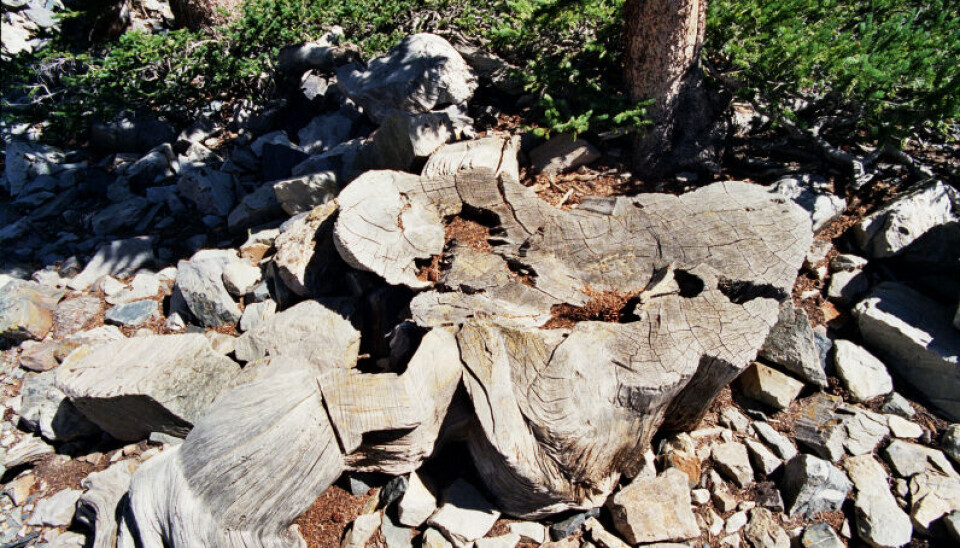
The researchers consequently need something called calibration curves, where radiocarbon results can be compared with large amounts of information that has been collected on the conditions in the atmosphere over tens of thousands of years. This information is stored in trees, among other things.
This is painstaking work.
In the burial site where the Svingerud stone was found, the researchers have radiocarbon dated burnt human bones and charcoal remains from birch and pine.
The results from the radiocarbon dating will soon be presented in a scientific article about the Svingerud stone find, says archaeologist Steinar Solheim.
“We currently have five C-14 datings, and we have the opportunity to make even more,” he said.
The researchers believe that they have obtained good results, and have come up with the general dating framework for the various samples. This dates the Svingerud stone from between the year 1 and the year 250 AD. This period is called the Roman period in Norway.
This makes the Svingerud stone the oldest known rune stone. Since the connection between the stone and the dated remains is so clear, it gives researchers a clearer idea of when people started making rune stones.
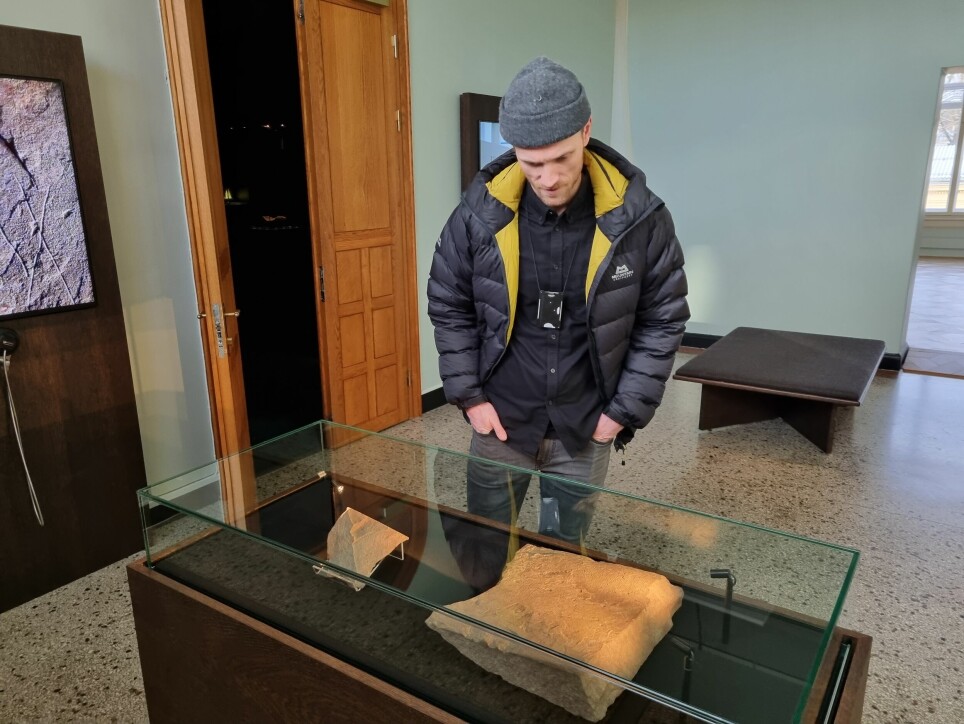
Unique opportunities
Rune researcher Kristel Zilmer says that the dating of the remains from the funeral pyre found with the Svingerud stone is so special that it could change the timeline for rune stones in Norway.
“We have had few reliable points of reference, and there has been little available in terms of archeologically datable materials,” she said to sciencenorway.no.
An example is another well-known, early Norwegian rune stone called Einang stone, which is in Vestre Slidre in Innlandet county. The stone is inscribed with runes from the oldest known runic alphabet, called older futhark. These are the same type of runes that are on the Svingerud stone.
The Einang stone is dated to be from the second half of the 3rd century AD, meaning the late Roman period.
This dating was done during the 20th century in connection with archaeological investigations, says Zilmer. The stone and the site were first investigated in the 1870s, and several investigations of the burial ground were carried out in the 20th century.
The dating is based on the stone's connection to the burial ground and the discovery of grave goods from nearby burial mounds, Zilmer said.
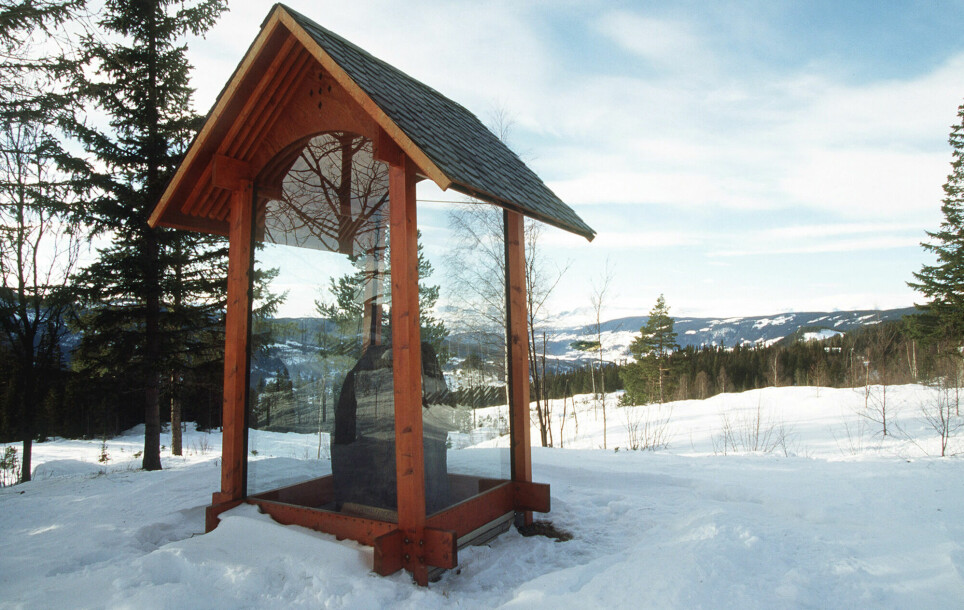
These included grave objects, and objects can be used to estimate the time period from which something dates.
A recently discovered Viking grave on Holmen in Oslo, for example, has been dated to around 800-900 based on a type of cape brooch found in the grave, which you can read more about at sciencenorway.no.
But the more precise, modern dating of the Svingerud stone offers new possibilities.
“In light of the Svingerud stone, we can begin to wonder if some other stones may be older than we previously thought,” Zilmer said to sciencenorway.no.
The question of when people started to carve runes into stones is currently unanswered. The oldest known inscribed runes to date come from a comb found in Vimose in Denmark. It is dated to around 160 AD, according to the World History Encyclopedia.
Zilmer also points out that there are more results to come from the study of the rune stone. Researchers are working with 3D models of the stone and scientific articles, as well as different ways of reading and interpreting the inscriptions.
Different hypotheses
There are several other inscriptions on the stone, in addition to the possible main inscription that may contain a name.
These can be explained in several different ways, but one hypothesis is that the simpler drawings may be early attempts at runic inscriptions, or an imitation of runes that a more knowledgeable person has written.
Several can be reminiscent of scribbles, Zilmer believes.

“This may be a memorial stone, where a person more proficient in runes has inscribed the name. There then may be several others who may have tried to imitate some symbols or create their own versions of these runic forms,” she said.
“There may have been more people who added their own marks, before the stone was laid down in the grave,” she said.
Zilmer emphasizes that it may not be possible to prove exactly what the different inscriptions mean, but that there are several possible explanations. You can read more about what the inscriptions might mean on the KHM website.
Translated by: Nancy Bazilchuk
------
Read the Norwegian version of this article on forskning.no












